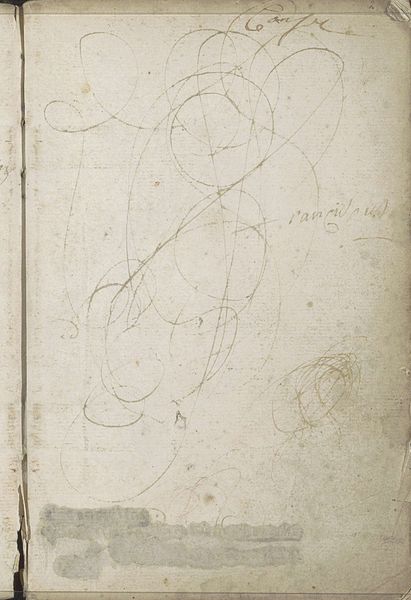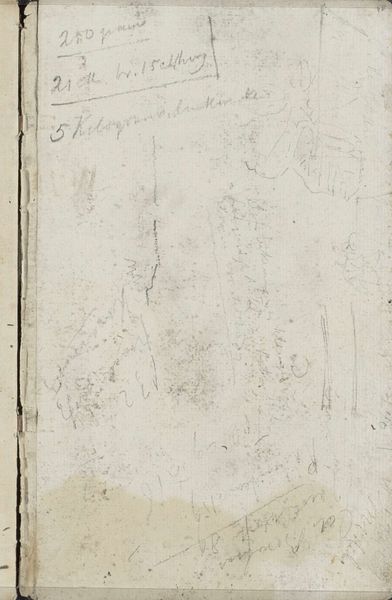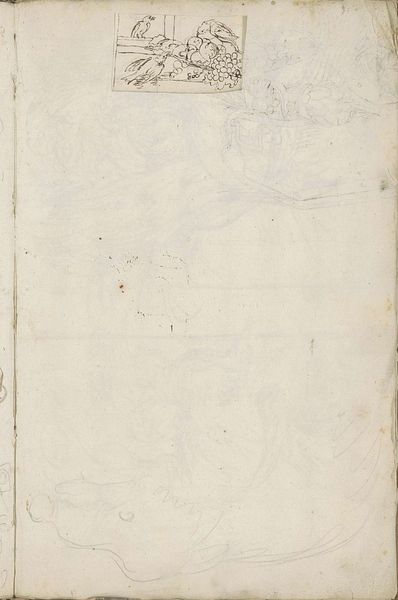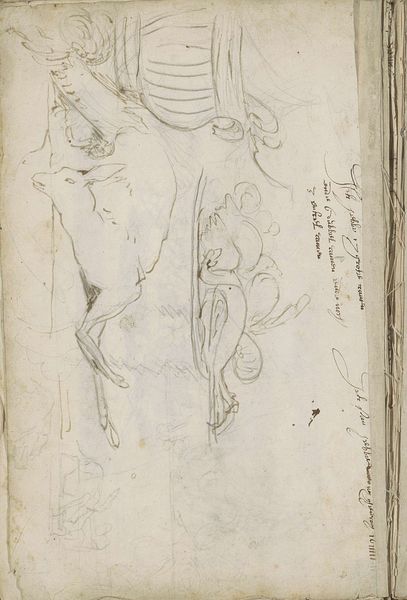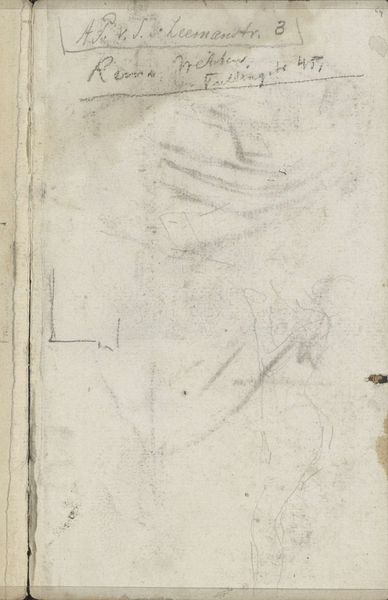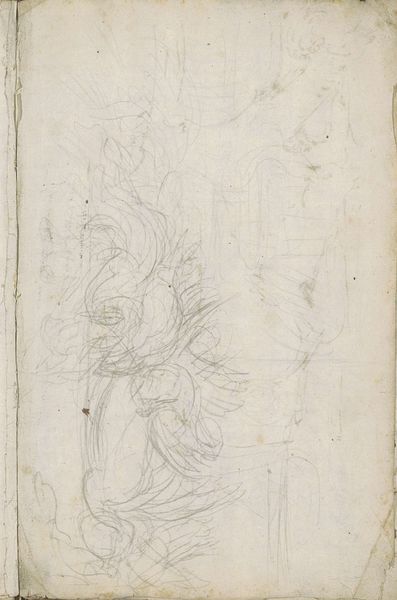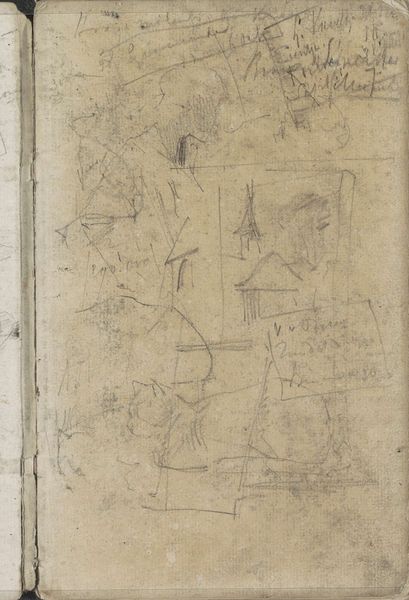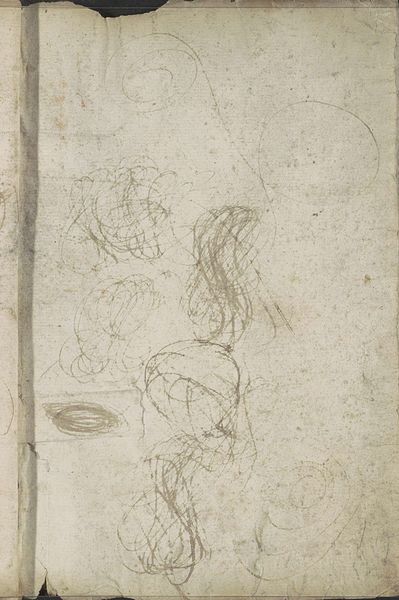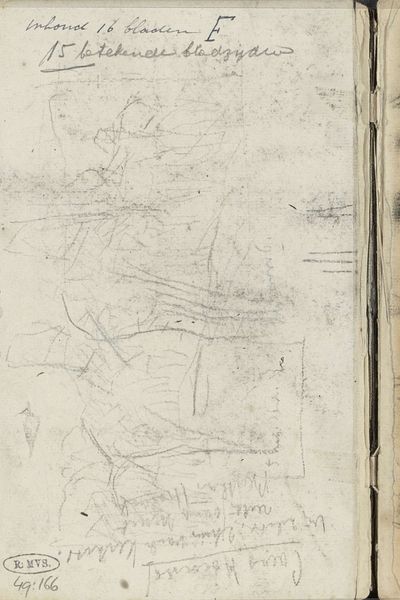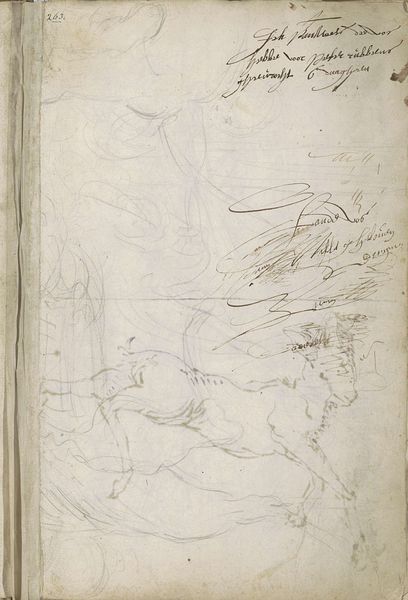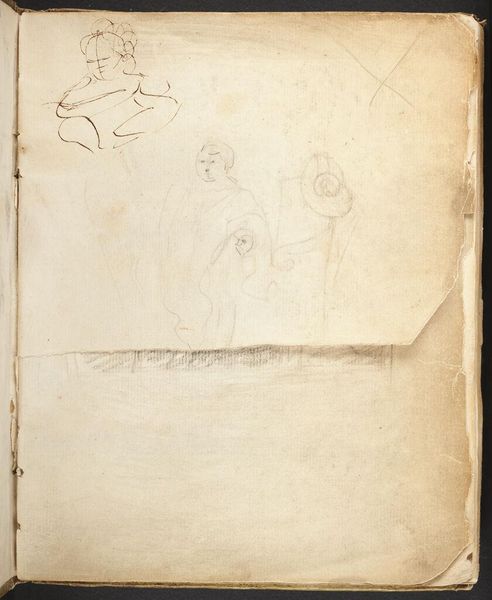
drawing, paper, pencil, pastel
drawing
baroque
paper
coloured pencil
pencil
pastel
watercolor
Copyright: Rijks Museum: Open Domain
Curator: Looking at this study dating from between 1710 and 1772, attributed to Petrus Johannes van Reysschoot, rendered with pencil, coloured pencil, pastel and watercolor on paper, one immediately confronts the process of artistic exploration itself. Editor: There's something incredibly intimate about this, even chaotic. Like eavesdropping on a creative thought before it fully takes shape. It feels fragile, ephemeral, all those scribbled circles almost disappearing into the page. Curator: Absolutely. Consider the materiality: paper, readily available even then, as a surface for immediate inscription. The choice of pencil, pastel, and watercolor invites us to think about the affordability and accessibility of these tools in comparison to, say, oil paints, and how they democratized artistic production in certain respects. These were the very building blocks available for broader, workshop training and use. Editor: Right, because this also speaks to class and access. The “study” itself becomes a political act, resisting the formal constraints of the art world and empowering artistic agency within everday possibilities and tools at hand. Did this democratizing accessibility create ripples in how artistic talent was valued within certain hierarchies and contexts, if there were no limits on tools available for use, for example? Curator: Indeed, the study as an object implies a certain artistic ecosystem predicated on readily available supplies to make these very possible in everyday studios of artists at varied stages of learning and production. Furthermore, the faint traces suggest not just the ease of application, but also of correction and re-working, an inherently unstable medium for fleeting ideas, unlike something like frescoes. It reveals more of the artistic process itself. Editor: And the "Study" is also asserting something of an artist's place as labor—where art becomes less of a commodity, to show creative experimentation—to bring more light on identity within all the noise of politics in daily artmaking life during this historical moment, I believe? Curator: Precisely. In dissecting the materials and their use, we are also uncovering a window into the economic and social frameworks in which this art was made. It’s a crucial part of understanding this artist’s output and artistic choices in baroque artistic society and production in the Low Countries. Editor: Reflecting on the faintness of it all, I feel a stronger connection to the act of creation, to the sheer, unfiltered potential. Curator: Agreed. By attending to its materiality, we get a closer look at how the artwork both reflects and constitutes particular forms of access to culture at large.
Comments
No comments
Be the first to comment and join the conversation on the ultimate creative platform.
